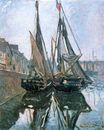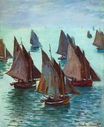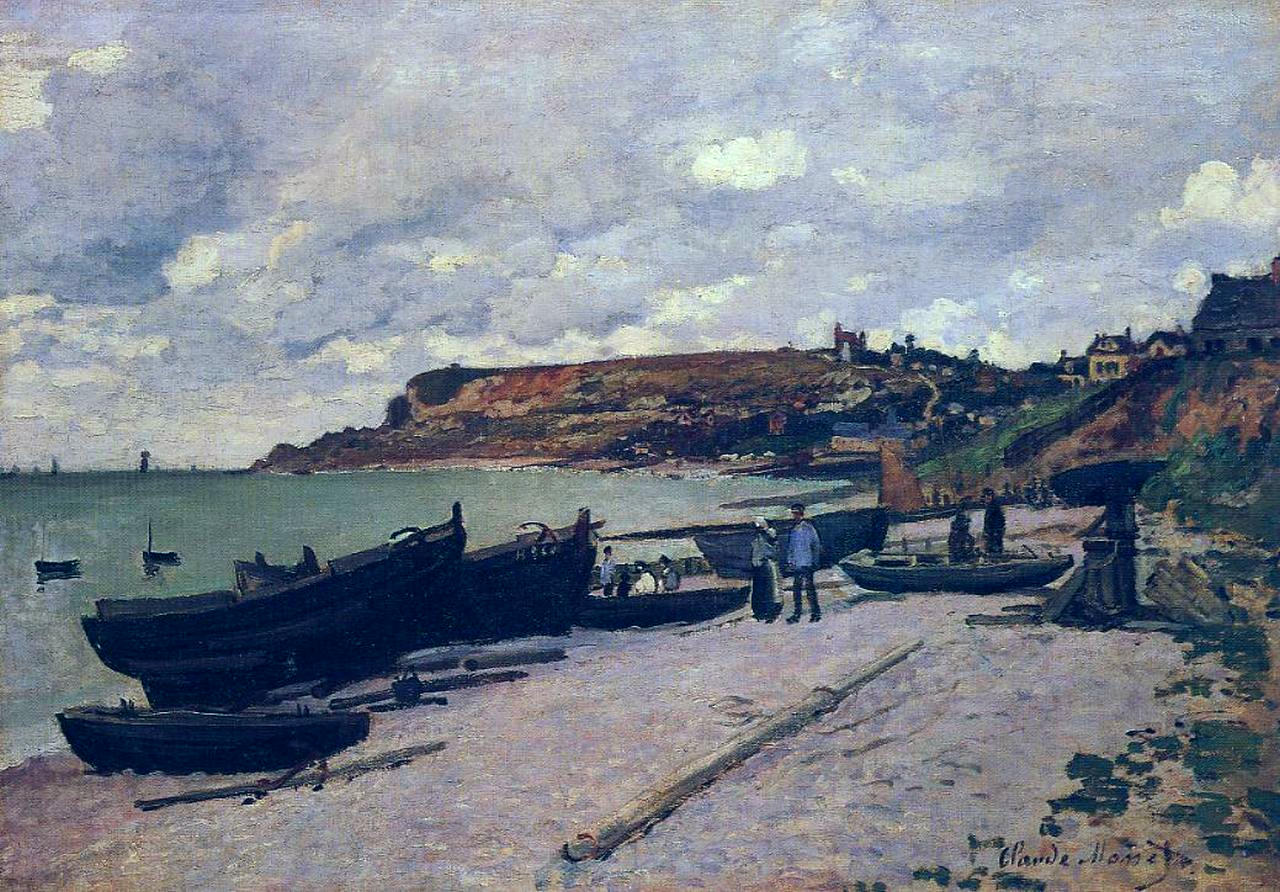Клод Моне - Сент-Адрес, рыбацкая лодка на берегу 1867
 |
 |
 |
 |
 |
 |
 |

Сент-Адрес, рыбацкая лодка на берегу 1867
57x80см холст/масло
National Gallery of Art, Constitution Avenue NW, Washington, DC
The image is only being used for informational and educational purposes
<< Previous G a l l e r y Next >>
From the National Gallery of Art, Constitution Avenue NW, Washington, DC. :
In June 1867, at the urging of his father, Claude Monet went to Sainte- Adresse, a popular resort town on the Normandy coast, for an extended stay in the home of his aunt, Sophie Lecadre. His visit lasted until near winter and proved to be a period of intense activity. "I have my work cut out for me," Monet wrote to his friend and fellow painter Frédéric Bazille shortly after his arrival. "I have about 20 canvases well underway, some stunning seascapes and some figures and gardens, everything in short."
Sainte-Adresse is one of the most striking paintings within this important group of works. In contrast to the majority of seascapes Monet produced at this time, which depict the beach facing southward in the direction of Le Havre, Sainte-Adresse shows the beach facing north toward the cape of La Cape of La Hève at Low Tide (Kimbell Art Museum, Fort Worth), which he exhibited in the Salon of 1865. In Sainte-Adresse, painted two years later, the view has been altered in small yet significant ways: the horizon line has been raised and the cape centered within the composition, giving greater prominence to the beach in the foreground. In addition, the inclusion of boats and the houses in the middle ground make the site look less desolate than in the earlier depictions. The accompanying figures, rather than being dwarfed by the vastness of the surrounding landscape, reside comfortably within it.